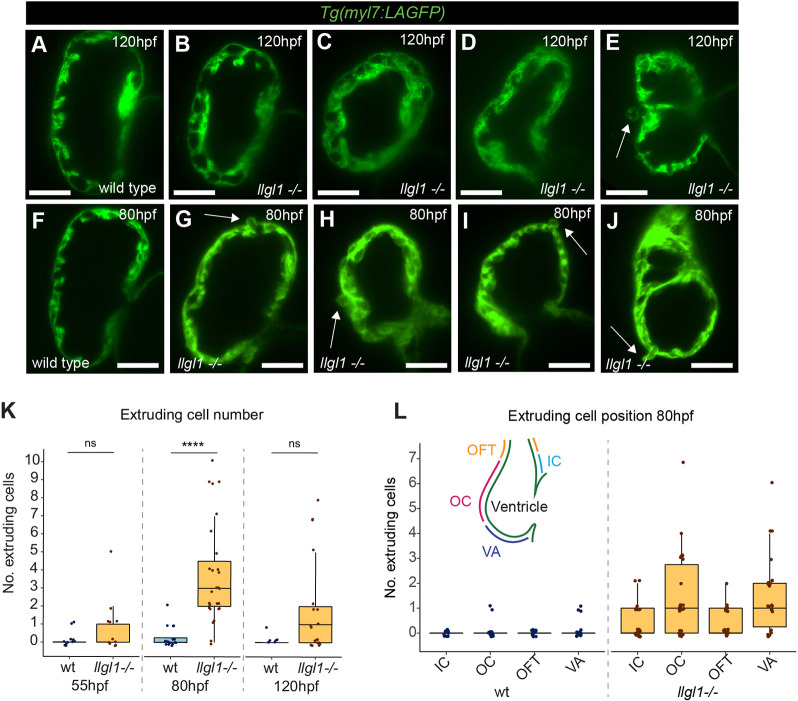Fig. 1.
Llgl1 promotes organised trabeculation and ventricular wall integrity. (A-J) Live light-sheet z-slices through the ventricle of Tg(myl7:LifeAct-GFP) transgenic wild-type and llgl1 mutant embryos visualising the myocardium at 120 hpf (A-E) and 80 hpf (F-J). Scale bars: 50 μm. Wild-type embryos have regular trabeculae emerging predominantly from the outer curvature of the ventricular wall at 120 hpf (A), whereas llgl1 mutant embryos exhibit disorganised trabeculae, ranging from wild-type-like (B), through to irregular trabecular CMs and multilayering of CMs (C-E). Some llgl1 mutants at 120 hpf exhibit apically extruding CMs (arrow, E). At 80 hpf in llgl1 mutants, CMs extrude apically from multiple locations in the ventricular wall (arrows G-J). (K) Quantification of extruding cell number in wild-type siblings and llgl1 mutant embryos at 55 hpf (wt, n=11; llgl1−/−, n=11), 80 hpf (wt, n=15; llgl1−/−, n=27) and 120 hpf (wt, n=6; llgl1−/−, n=19). (L) Distribution of extruding cells in wild-type and llgl1 mutant embryos at 80 hpf. Schematic depicts the location of the outer curvature (OC), ventricular apex (VA), outflow tract (OFT) and inner curvature (IC) in the ventricle. Comparative analysis performed using one-way ANOVA (****P<0.0001). ns, non significant. Box plots show median values (middle bars) and first to third interquartile ranges (boxes); whiskers indicate 1.5× the interquartile ranges; dots indicate data points.

